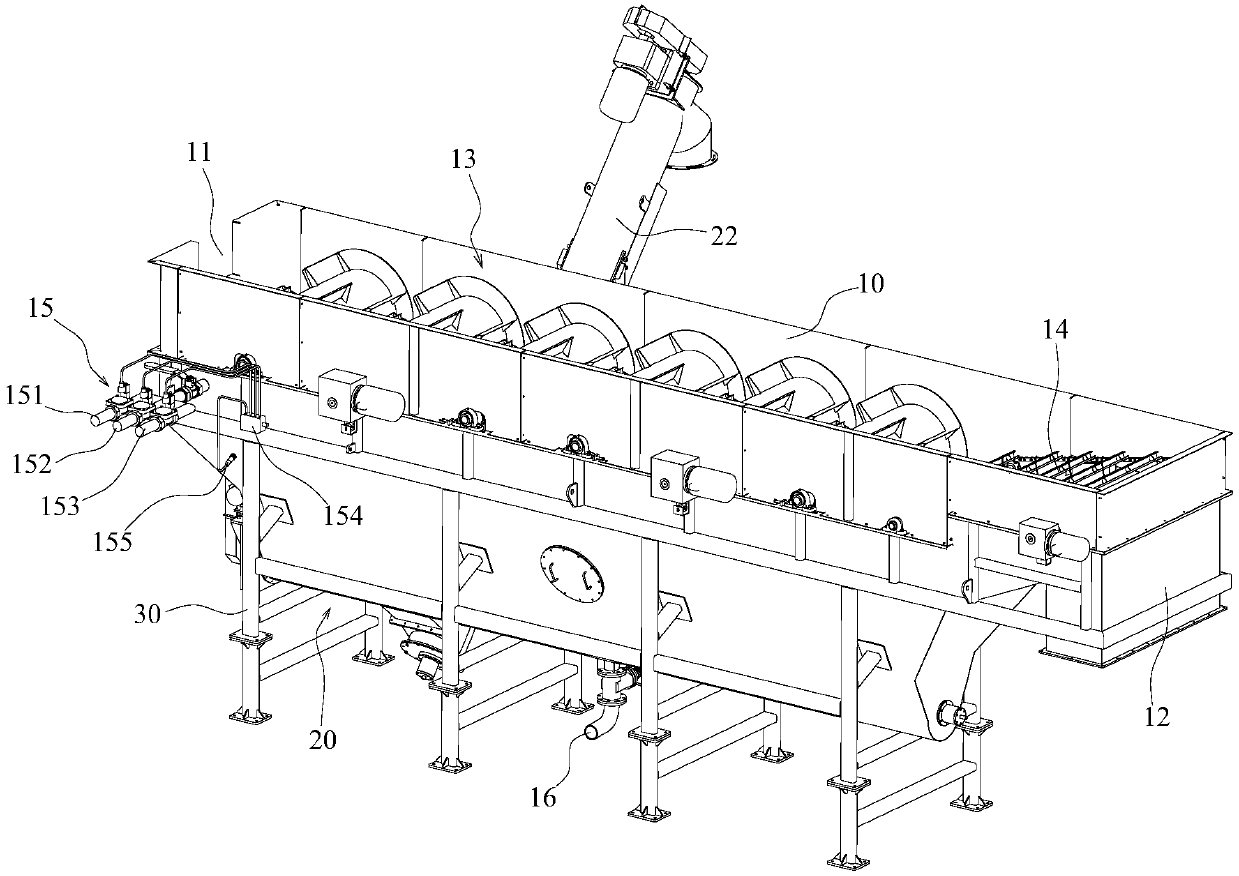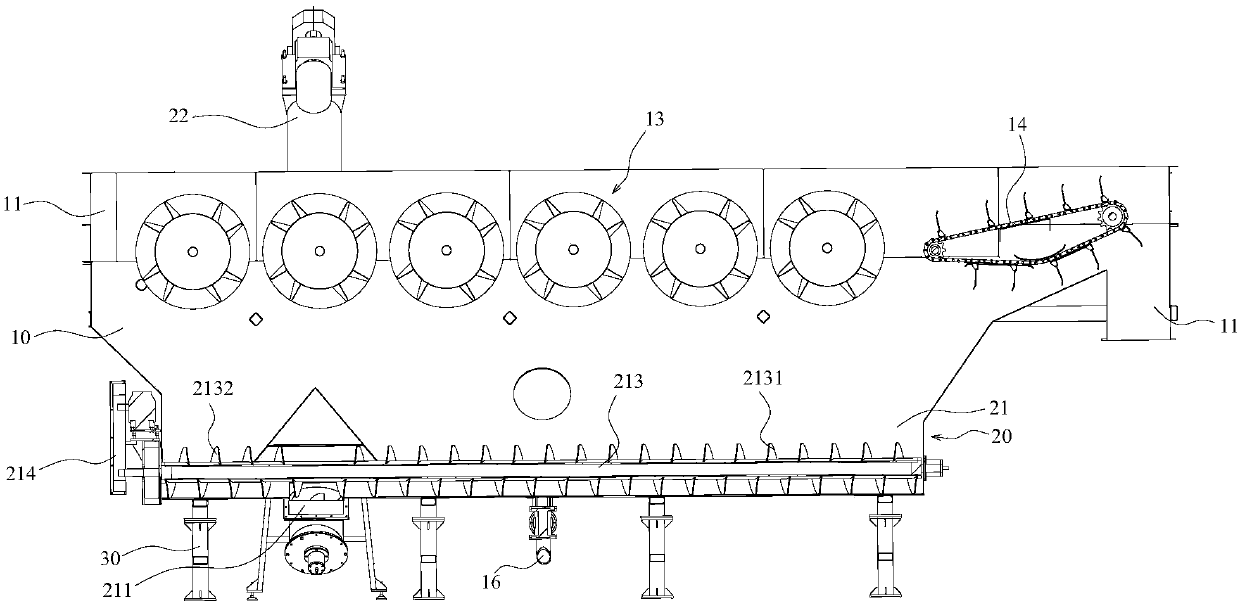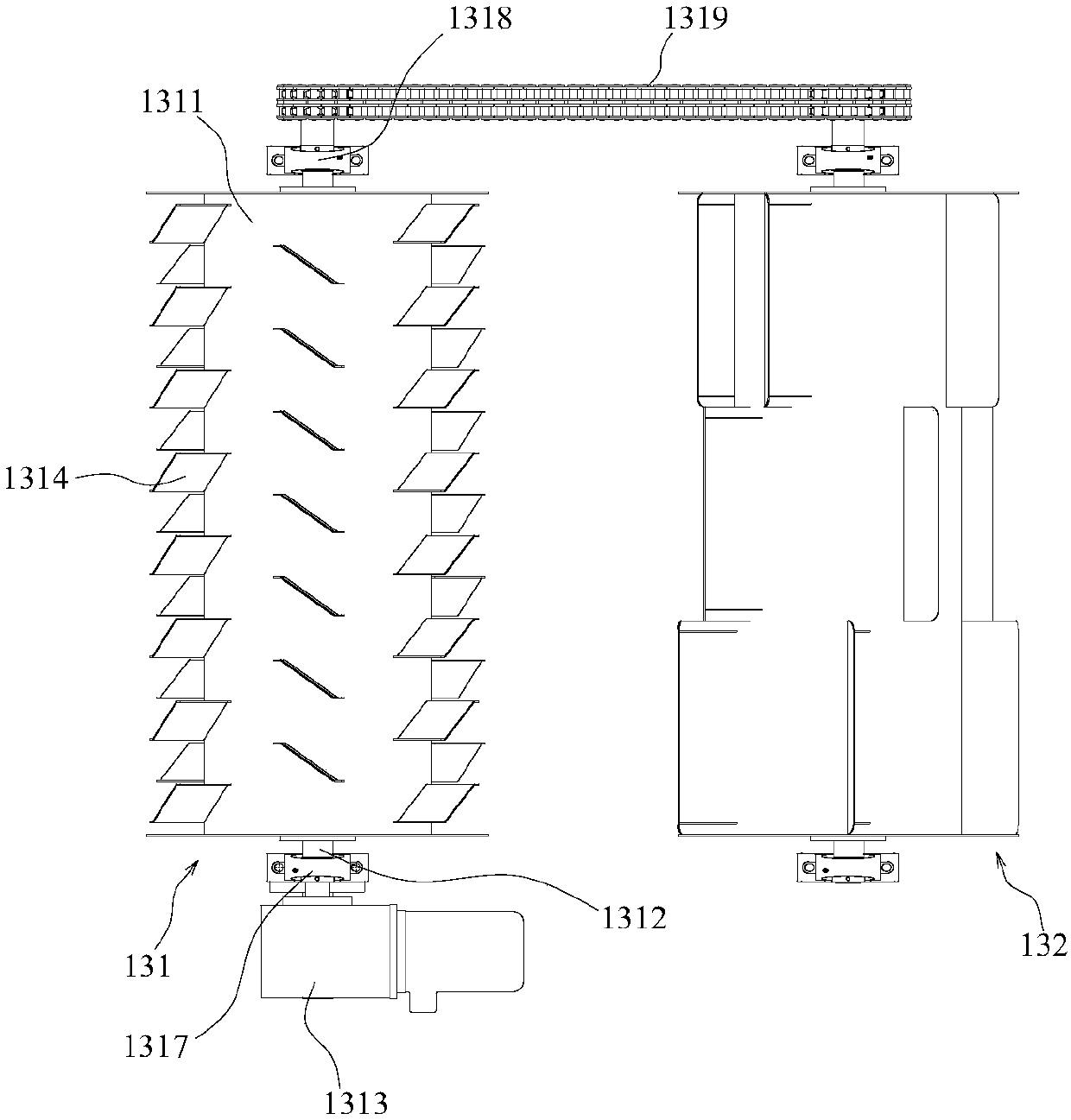Separation settling tank
A separation tank and sedimentation tank technology, applied in the field of separation and sedimentation tanks, can solve the problems of low production efficiency of plastic products, affecting the separation of plastic mixtures, and difficulty in automatic separation and recovery of floating and sinking materials, so as to improve recovery efficiency, Guaranteed effect
- Summary
- Abstract
- Description
- Claims
- Application Information
AI Technical Summary
Problems solved by technology
Method used
Image
Examples
Embodiment Construction
[0029] Below, the present invention will be further described in conjunction with the accompanying drawings and specific implementation methods. It should be noted that, under the premise of not conflicting, the various embodiments described below or the technical features can be combined arbitrarily to form new embodiments. .
[0030] Such as Figure 1-3 As shown, in order to realize automatic separation and recycling of plastic products, the present invention provides a separation and sedimentation tank, which includes a separation tank main body 10, a collection device 20 arranged at the lower part of the separation tank main body 10, and a settling tank for supporting the separation tank. The main body 10 and the bracket 30 of the collecting device 20, the collecting device 20 communicates with the inside of the separation tank main body 10, and is used to collect the sinking material after the separation of the plastic mixture in the separation tank main body 10; one end ...
PUM
 Login to View More
Login to View More Abstract
Description
Claims
Application Information
 Login to View More
Login to View More - R&D
- Intellectual Property
- Life Sciences
- Materials
- Tech Scout
- Unparalleled Data Quality
- Higher Quality Content
- 60% Fewer Hallucinations
Browse by: Latest US Patents, China's latest patents, Technical Efficacy Thesaurus, Application Domain, Technology Topic, Popular Technical Reports.
© 2025 PatSnap. All rights reserved.Legal|Privacy policy|Modern Slavery Act Transparency Statement|Sitemap|About US| Contact US: help@patsnap.com



